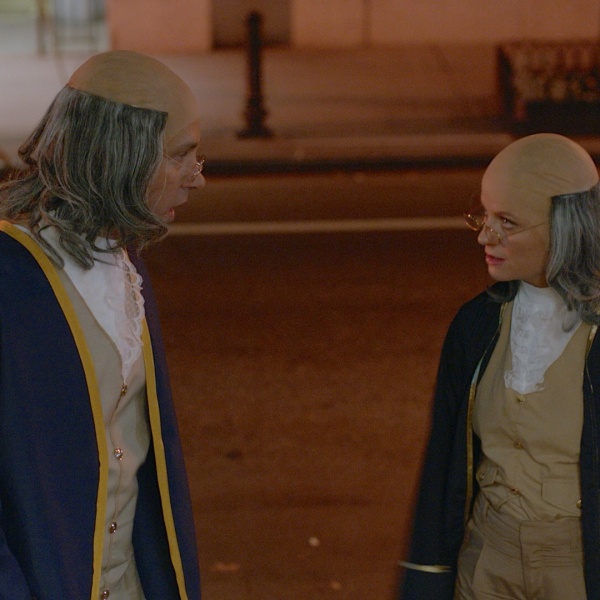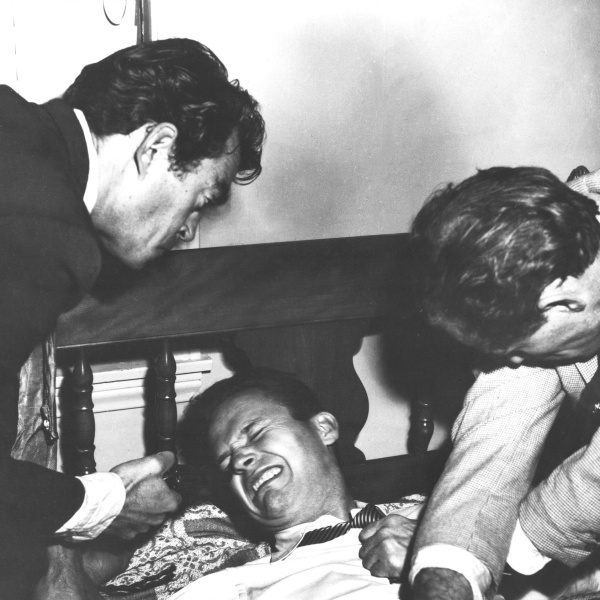When we first meet French figurative painter Apolonia Sokol, she’s getting ready for her 26th birthday. Her face is reflected in both the bathroom mirror where she’s cutting her bangs and in the camera of Danish filmmaker Lea Glob.
It’s this exact kind of fun house-twisting, telephone-style portrait of the artist that makes up most of the frustratingly oblique documentary “Apolonia, Apolonia.” Although Glob aims for an intimate portrait, her zoom is almost too close, her narration too navel-gazingly shallow, which results in a doc that often remains distant and distorted through these multiple lenses.
The women first met three years earlier when Glob was assigned to make a filmed “portrait of a person.” She’d heard of Apolonia’s storied, Bohemian upbringing inside her parents’ underground theatre in Paris. Apolonia first turns the camera on Glob, who blushes instantly. When the filmmaker turns her camera back on Apolonia, the artist’s gaze seems to pierce right through the camera, yet gives nothing in return, an impenetrable armor.
Glob spends the next 13 years documenting Apolonia’s life, from her schooling at the École des Beaux-Arts to her first foray into the professional art world, and lastly her ascension to one of the most acclaimed artists of her generation. Yet, despite all this intimate footage and occasional confessions, the portrait of Apolonia as a person remains mostly hollow.
The biographical details, like Apolonia’s childhood bout with cancer or her research into her mother’s family’s expulsion from Belarus to Serbia and eventual settling in Poland, are told with choppy montages that dull the weight of their impact on her life. Her schooling is also filmed as if in a vacuum. While there are visits from professors, her fellow students are never shown. When critiqued that Apolonia’s personality is more interesting than her work, Glob opines whether the same criticism would have been lobbed at a male student. Though it’s certainly a possibility the critique has a layer of sexism to it, Glob’s assessment feels self-serving without seeing Apolonia’s work within the context of her peers.
Important moments in Apolonia’s professional career are told with similarly frustrating vagueness. The artist’s time ghost painting for a popular contemporary artist in New York City is granted exactly three minutes of screen time. And while her detour in Los Angeles as protégé of controversial art collector Stefan Simchowitz, nicknamed the “Art World’s Patron Satan,” is a sharp critique of capitalism’s stranglehold on the lives of artists, much is still left dangling and undeveloped, including a random visit to Mike White’s home and a mention of Harvey Weinstein.
The underdevelopment of these threads, particularly as they pertain to Apolonia’s community, is odd given the emphasis on community and autobiography in the artist’s work. Each phase of Apolonia’s paintings are a reflection of the life around her, be it her series of tarot card paintings inspired by her mother’s family or the various portrait series inspired by her friends in Paris or the art world in Los Angeles. How do we find the meaning — or lack thereof, as some critics maintained — of her early work, without any real grasp of these communities she depicted?
The one deeply personal aspect of Apolonia’s life that we are granted a glimpse of is her relationship with Oksana Shachko, an artist, political refugee and founding member of the Ukrainian radical feminist activist group Femen (whose emphasis on body politics would inspire Apolonia’s later work). Much of the film’s first half follows the women’s relationship after Apolonia takes Oksana and other members of Femen into her theatre space. We see them in bed. We see their care for each other. We even see how Apolonia’s dedication to her work leads her to neglect Oksana.
Oksana then disappears for about forty minutes of the film as Apolonia’s work ambitions take her to the United States. Again, Glob’s hyper-zoom on just Apolonia does a disservice to her life. Did she miss Oksana? How did this separation affect either of them? The film doesn’t seem to care, yet as a viewer Oksana’s absence is deeply felt. That her untimely death is then used as an emotional catalyst for Apolonia just as she finds her artistic voice and reaches the level of acclaim she always dreamed of exposes the hollowness of Glob’s film.
While Glob took exception with the assessment that Apolonia’s personality was more interesting than her work, her surface level portrait of her as both an artist and as person ironically upholds that very statement.
Grade: C
“Apolonia, Apolonia” will open in New York on Friday, January 12, at DCTV’s Firehouse Cinema.





